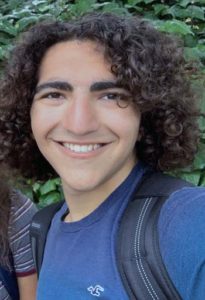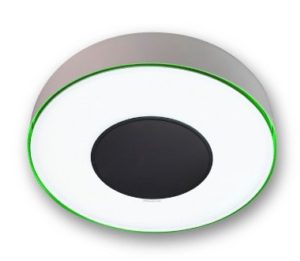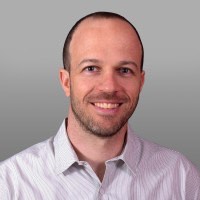

SAN DIEGO- I’ve never liked cords. I can’t imagine anyone who does. At best when you need them they’re tangled, at worst they’re lost or broken. People have been trying to get rid of wires since their inception. When Nikola Tesla created the Tesla coil in his pursuit of wireless power supplies. His theory was to use the Earth to conduct the electrical signal coming from his Wardenclyffe tower in New York across the Atlantic to the UK. Before he could finish his research, his financier J.P. Morgan decided to pull the plug on the experiment.
Since then numerous attempts have been made to make wireless electricity a reality. Finally, I think the technology is not only becoming a reality but will be available to most consumers. Via Zoom, I chatted with Ori Mor, CTO of Wi-Charge, to discuss his company and the new technology that it has created.
In essence, Wi-Charge has developed a wireless power source that can be put anywhere in a room and, via an infrared frequency, charge any electric device that has been fitted with a tiny receiver that is within a direct line of sight.
Wi-Charge started as part of the Elite Technology Unit of the Israeli Defense Forces and as such got to “choose out of the top physicists, the top engineers, the top mathematicians and educate them that every problem can be solved,” Mor said.

For their efforts, they received the Israel Defense Award, which is the highest award for technology excellence and contributions to the State of Israel. Mor put it simply, “We are geeks and we know what to do.” He then helped found two tech companies, one company was the first to introduce fiber and gigabyte internet to the home and another reached half a billion end users. Mor wanted to do something different with Wi-Charge. He wanted to create a block upon which others can build more technological advances and change the world.
If that sounds like a lofty goal, that’s because it is. In order to get Wi-Charge working, his team, led by CEO Victor Vaisleb, needed to develop some components from scratch.
Mor expressed confidence that the technology his team has developed will out-compete Energous, Ossia, SonicEnergy, and Powercast. He said his team surveyed the entire electromagnetic spectrum and found the limitations of each frequency. Eventually, Mor said, the team chose infrared radiation because while the technology is much harder to develop, it allows for the highest amount of use.
Radio frequencies are good for very low amounts of power. Because of how fast energy spreads from RF, the energy is diminished after a meter. This is what makes RF perfect for close-by communication, giving everything from the newest cell phone to the oldest radio a way to transfer data like sound and video.
Mor listed what he believes are the shortcomings of some of his competitors’ products, technology by technology. In his view:
–Ultrasound diverges less than RF (depending on the frequency) but is affected by the medium. If there is too much humidity or wind its capabilities diminish. To transmit the energy the receiver needs to vibrate. Physical obstacles can cause communication to sound like talking to someone behind a wall of glass. The sound doesn’t transmit as efficiently.
–Magnetic induction, commonly known as Qi Charging, is good for high amounts of power but doesn’t have long-distance range.
On the other hand, Mor said, infrared allows for high amounts of power over a long distance. It is also the only frequency range for which a receiver can be small enough to fit inside any consumer device.
Because Wi-Charge was alone in developing the infrared technology, it was able to develop and register over 50 patents, Mor said.
Referencing a San Diego-based company, Mor stated that he wants Wi-Charge to be the next Qualcomm.
Qualcomm is the leading provider for chips for digital communication, a field that Qualcomm co-founder Andrew Viterbi invented. Viterbi is also a three time Wi-Charge investor. “As much as it sounds arrogant, we believe we hold the keys for this market and can be a monopoly, because we analyzed at the beginning what should be the right way.”
The possible uses for Wi-Charge’s technology will only go up as time goes on, he said. The most accessible consumer application right now would be to charge smartphones and other smart technology.
Imagine being able to come home after a long day at work and have your phone start charging the moment it’s out of your pocket. It could also make smart home devices like a smart lock never need to replace its battery or allow personal assistant speakers (Google Home, Amazon Echo, etc) to go beyond the bounds of one’s power outlet.
Businesses could use Wi-Charge to improve retail automation, like monitoring stock and giving real time feedback when something runs out, Mor continued. He said that companies like Walmart and Target lose up to 10% each year because they cannot check when items aren’t in stock. Another application would permit digital signage in places without convenient electrical outlets. Mor stated that above all, his company just wants to get this technology implemented so that others can build from it. “We don’t care what we’re gonna power, we just deliver the power.” He speculates that Wireless power could become an industry worth over $100 billion.
Mor’s technology is not yet perfect. There must be a direct line of sight from the transmitter, which could be anything from the Wi-Charge lights or wall socket, to the receiver. If you put your hand in between your phone and emitter, or had your phone in your pocket, then it would not charge. This also means that when the transmitter does not ‘see’ any devices it will not transmit energy. Another limitation is that as of now Wi-Charge can only emit up to three watts. While this is certainly enough to charge smartphones; it won’t charge them fast. However because this charge would be kept essentially anywhere within the room it wouldn’t need to be.
Even with the pandemic, Mor says Wi-Charge expects to launch two or three pilot projects this year, barring a second or third wave of COVID-19. During lockdown his team members used their newly found free time to find a way to disinfect surfaces from germs (including COVID-19) from a distance. They showed the tech to Sheba, the largest medical center in Israel. It’s now in clinical trials.
I’ll admit, I geeked out a little towards the end of this interview. I asked how this technology could be applied on a much larger scale, like transmitting power from earth to the moon. To my surprise, Mor had listened to a webinar the day before the interview featuring the Navy’s Dr. Paul Jaffe about exactly that. He sent me the link and I was amazed. There are many projects in the works to deliver high amounts of power wirelessly to drones, across mountain ranges, and to the moon.
More information about Wi-Charge and its products is available on its website: https://wi-charge.com/
*
Shor M. Masori is a freelance writer who divides his time between his home in San Diego and studies at UC Berkeley.